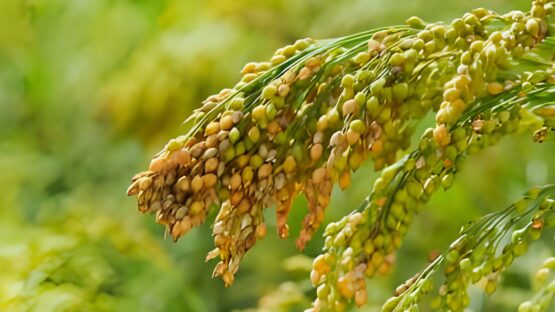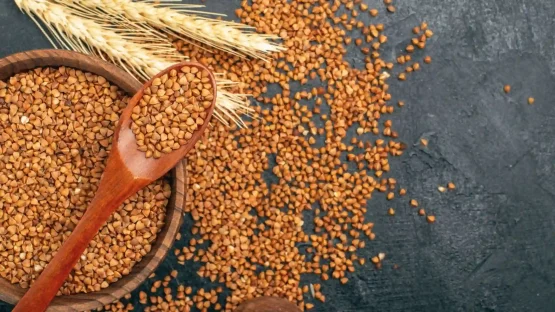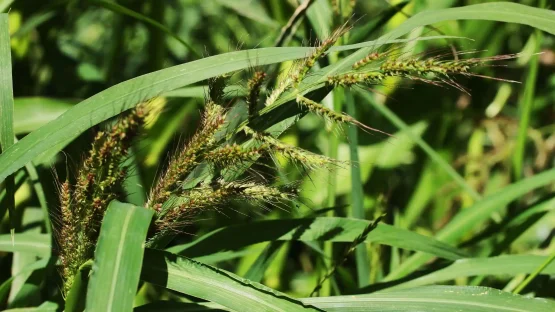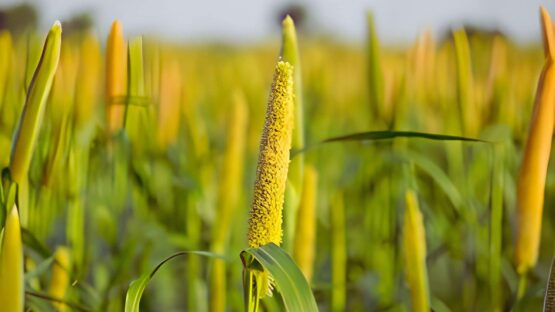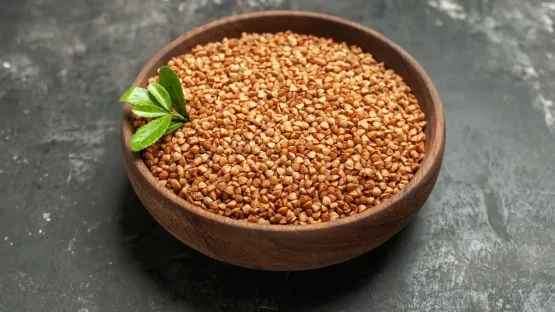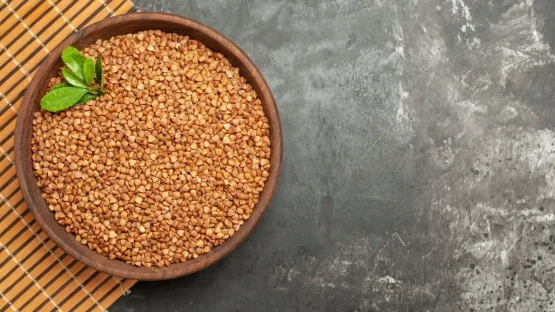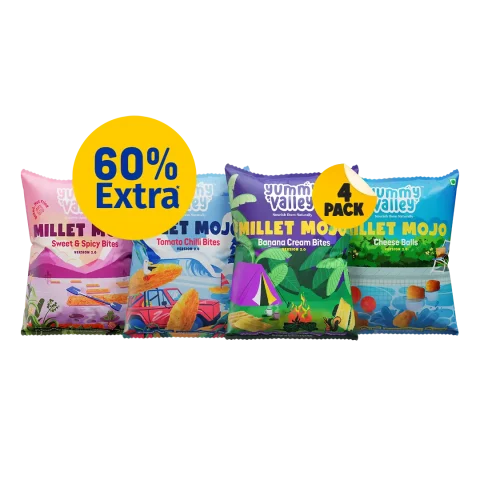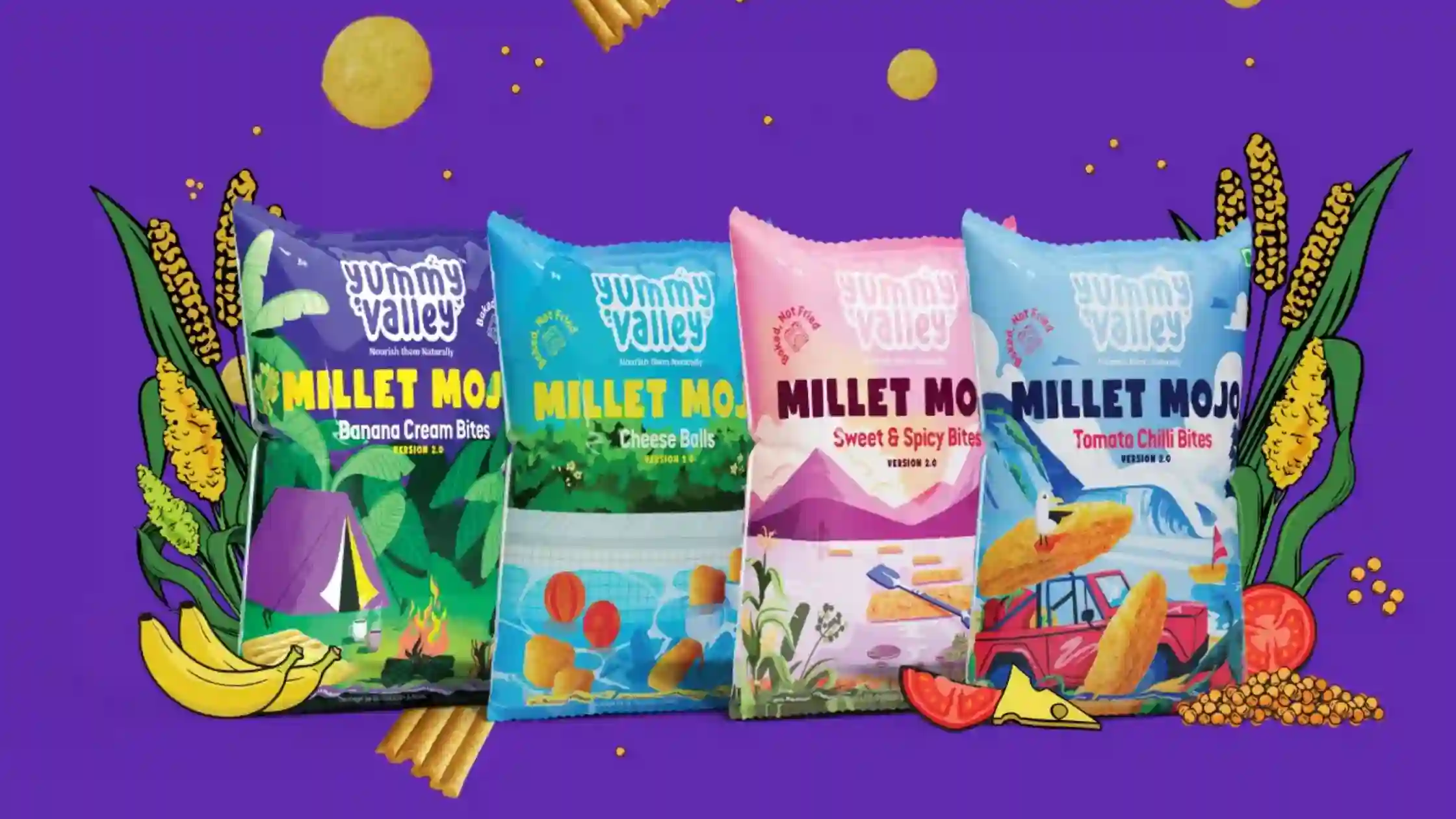
10 Different Types of Millets and Their Benefits
- Published on:
- Last update: 10 December 2024

Millets: In today’s world of feeling good, everyone’s talking about super healthy foods like millets. These little grains are like health superheroes, making you strong and helping you lose weight without any gluten. If you’re used to eating wheat and rice every day, trying out these organic millets might change your diet game. But with lots of options, it’s easy to feel a bit lost about which one to choose and what they give you in terms of good stuff and calories. Let’s explore the cool types of millets you have got to know!
Table of Contents
ToggleWhat Are Millets?
Millets are a group of small-grained, drought-tolerant cereal crops similar to true grains in some contexts. Besides being flexible, they can be incorporated in numerous preparations including, breakfast meals, bread, snacks and even in drinks. The millets can be classified as many varieties and each of them varies from other in terms of taste, feel and nutrient values.
For ages now within Indian culture, millet has stood as an essential food item in their culinary practices. They were originally cultivated in regions that other crops could not survive because of drought and other related harsh conditions. Finally, millet production reduced as people switched to wheat and rice production.
People were experienced about the nutritional values of millets and as they faced some lifestyle related health problems in recent years, so they are back to millets today for better health. They have been introduced to the public again due to their many nutritional values, for instance, they are high in fibre, free from gluten and some essential minerals like calcium iron Mg.
They also do not contain gluten and people with celiac disease can use it as a substitute for other grains. One must also first appreciate that millets are sustainable crops as they need lesser inputs like water as compared to many other crops.
List of Types of Millets
With an array of types of millets, each boasting unique traits, benefits, and applications, here’s a glimpse into some of the types of millets. Some of them are listed below;
- Foxtail Millet (Kakum / Kangni)
- Proso Millet (Chena / Barri)
- Sorghum Millet (Jowar)
- Finger Millet (Ragi)
- Pearl Millet (Bajra)
- Browntop Millet (Korle)
- Barnyard Millet (Sanwa)
- Little Millet (Moraiyo)
- Buckwheat Millet (Kuttu)
- Kodo Millet
Types of Millets
1. Foxtail Millet (Kakum/Kangni)
Foxtail millet is a lesser-known type but is packed with health benefits. It’s rich in complex carbohydrates, making it a great alternative to refined grains. It also contains high levels of dietary fibre, helping to regulate blood sugar levels.
- Nutrient Content: Millet has lots of B vitamins like niacin and thiamine. They’re vital for creating energy and boosting metabolism. Plus, this grain gives you a fair share of protein and fibre, that’s great for digestion and long-lasting energy.
- Health Benefits: Foxtail millet is great at controlling blood sugar levels, promoting a healthy heart, and bettering digestion. Thanks to its high fiber amounts, it’s a superstar at managing cholesterol and stopping excessive eating.
Read more: Foxtail Millet: Benefits, Nutrition, Uses, Recipes & More
2. Proso Millet (Chena/Barri)
Proso millet, a tiny-seed variety, packs a robust amount of protein. Its ability to adapt in various dishes is impressive. The dry areas of Asia and Europe have been its home for millennia.
- Nutrient Content: Proso millet is notable for its high content of protein and amino acids, making it a great option for people following plant-based diets. It also has a lower carbohydrate content compared to other grains, which helps regulate blood sugar levels.
- Health Benefits: Proso millet is great for folks with diabetes because of its low sugar impact. It’s a handy tool for managing weight because it’s low calorie and high in protein. Plus, its magnesium-rich nature may lessen heart disease risk, promoting a strong heart.
Read more: Proso Millet: Benefits, Nutrition, Uses, Recipes & More
3. Sorghum Millet (Jowar)
A super grain in Africa and Asia, dubbed jowar or jola in India, boasts a slightly bitter taste and a brownish hue. Loaded with fibre, iron, and antioxidants, it’s the warrior combating inflammation, amplifying digestion, and battling cancer risks. Whether as bhakri or popcorn, this versatile millet steals the show!
- Nutritional Benefits: Sorghum is a rich source of dietary fibre, protein, iron, and antioxidants. It is also gluten-free, making it suitable for people with celiac disease or gluten intolerance.
- Health Benefits: Sorghum promotes heart health by lowering cholesterol levels, and its high antioxidant content helps fight inflammation and oxidative stress. It also improves digestion due to its high fibre content and helps manage weight.
Read more: Sorghum Millet: Benefits, Nutrition, Uses, Recipes & More
4. Finger Millet (Ragi)
The nutritious gem hailing from Africa, fondly known as ragi or nachni in India, rocks a reddish hue and an earthy flavour. Packed with protein, calcium, and vitamin D, it’s the bone-strengthening, muscle-boosting champion warding off osteoporosis. From dosa to porridge, it’s a superhero in the kitchen!
- Nutritional Composition: Ragi is exceptionally high in calcium, making it ideal for strengthening bones and teeth. It is also rich in amino acids, iron, and antioxidants.
- Health Benefits: The high calcium content of Ragi makes it perfect for children, the elderly, and anyone looking to boost their bone health. Its fibre-rich content aids digestion and helps control blood sugar levels, which is why it’s often recommended for diabetics. It’s also a great option for those looking to lose weight due to its ability to keep you feeling full for longer.
Read more: Finger Millet: , Nutrition, Uses, Recipes & More
5. Pearl Millet (Bajra)
The global superstar, recognized as bajra or kambu in India, boasts a greyish shade and a coarse texture. Energizing with high zinc, iron, and energy levels, it revs up metabolism, amps up circulation and fortifies immunity. Whether in roti or dhokla, this millet tastes a whole new level!
- Nutritional Profile: Bajra is a nutritional powerhouse, rich in fiber, protein, magnesium, and iron. It’s particularly beneficial for people suffering from anemia due to its high iron content.
- Health Benefits: Regular pearl millet consumption helps lower bad cholesterol, improve digestion due to its high fiber content, and manage blood pressure levels due to its magnesium content. It’s also a good grain for diabetics because it has a low glycemic index, meaning it releases sugar slowly into the bloodstream.
Read more: Pearl Millet: Benefits, Nutrition, Uses, Recipes & More
6. Brown Top Millet (Korle)
The rare find from India, known as korale or andu, flaunts a brown hue with a mild flavour. Low on glycemic index but rich in thiamine, niacin, and riboflavin, it’s the diabetes manager, blood pressure regulator, and skin health supporter. From porridge to dosa, it’s a culinary delight!
Read more: Brown Top Millet: , Nutrition, Uses, Recipes & More
7. Barnyard Millet (Sanwa)
The rapid grower across India, dubbed sanwa or kuthiraivali, arrives with a greenish hue and a soft texture. Low-cal, high-fibre, and packed with iron, calcium, and phosphorus, it’s the weight-watcher pal, digestive champion, and anaemia warrior. From pongal to idli, it’s the versatile star!
- Nutritional Highlights: Barnyard millet is low in calories and high in fibre, making it an excellent grain for those aiming to lose weight or manage their cholesterol levels. It also contains calcium, iron, and phosphorus, which are essential for bone health.
- Health Benefits: The high fibre content of barnyard millet aids in digestion, regulates bowel movements, and helps in maintaining healthy blood sugar levels. Its low-calorie count makes it an ideal grain for those on a weight-loss journey.
Read more: Barnyard Millet: Benefits, Nutrition, Uses, Recipes & More
8. Little Millet (Moraiyo)
The petite powerhouse found in India, Nepal, and China, named kutki or samai, rocks a yellowish shade and a mild flavour. Low on fat but rich in protein, magnesium, potassium, and zinc, it’s the cholesterol warrior, constipation combatant, and nerve function booster. Ready for dosa or porridge, it’s the small grain with big benefits!
- Nutritional Highlights: Little millet is rich in B vitamins, iron, and fibre. Its high dietary fibre content makes it excellent for digestive health and managing weight.
- Health Benefits: The high fibre content helps regulate blood sugar levels, making it a good option for diabetics. Its rich nutrient content also supports overall health, including improved digestion and cardiovascular health.
Read more: Little Millet: Benefits, Nutrition, Uses, Recipes & More
9. Kodo Millet (Kodra/Varagu)
The ancient wonder from India, Africa, and China, named kodra or varagu, arrives with a light brown hue and a slightly bitter taste. High in fibre, protein, and antioxidants, it’s the diabetes tamer, obesity warrior, arthritis ally, and asthma supporter. Ready to transform dishes from pulao to upma, it’s the multi-talented millet!
Read more: Kodo Millet: Benefits, Nutrition, Uses, Recipes & More
10. Buckwheat Millet (Kuttu)
Not a true type of millet but a pseudo-cereal in the rhubarb family, known as kuttu or papparai in India, brings a dark brown hue and a nutty twist. Gluten-free and rich in protein, flavonoids, manganese, and copper, it’s the blood sugar tamer, heart health advocate, and inflammation fighter. Whether as roti or puri, it’s a culinary delight!
Checkout: Healthy Millet Snacks
Millets Nutritional Value (Per 100 Grams)
In a 100 Grams serving of uncooked millet, you’re looking at around 378 calories. Carbohydrates reign supreme in all types of millet, offering a sustained energy boost. Beyond carbs, they pack a punch with protein, fibre, vitamins, minerals, and antioxidants – finger millet even brings calcium to the table. These nutrients are essential for your body’s regular functioning, making millet a valuable source to meet multiple nutritional needs.
Here is the Millet Nutritional value per 100 gm serving;
| Nutrients | Value per 100 G |
|---|---|
| Calories | 378 |
| Fat | 4.22g |
| Carbohydrate | 72.85g |
| Protein | 11.02g |
| Sodium | 5mg |
| Dietary Fiber | 8.5g |
| Calcium | 8mg |
| Iron | 3.01mg |
| Potassium | 195mg |
Benefits of Millets
According to some research, there are a heap of millet benefits to the human body. Let’s discuss a few of the benefits of millets.
1. Contributes To Digestive Health
Millets are like the super grain for your belly! They’ve got fibre that keeps things moving smoothly and stops those belly troubles. Plus, they’ve got prebiotics that invite the good guys into your tummy, making it super strong and tough against bad stuff! This can improve gut health and immunity.
2. Great For People With Gluten Intolerance
Millets are good for folks who can’t handle gluten! They’re like the cool kids in town, totally gluten-free, so no tummy troubles for those who get sick from it. You’ll find millets hanging out in all those tasty gluten-free treats like bread and cookies, making life yummier for everyone!
3. Supports Heart Health
Millets are like a treasure chest packed with magnesium, a fancy mineral that’s a total heart cheerleader. It’s like a spa day for your heart, lowering blood pressure, keeping blood flowing smoothly, and giving those blood vessels a chill vibe. Plus, they bring along a buddy named adiponectin that’s all about protecting your heart from any trouble.
4. Enhances Mood
Millets are packed with something cool called tryptophan, which is like a mood booster. It’s the superhero behind serotonin, the brain’s mood manager that controls how we feel, sleep, and munch. For anyone feeling a bit low or anxious, munching on millets might just be the mood lifter you need!
5. Manages Weight
Low on calories but big on fibre and protein, they’re the superheroes that keep you feeling full for ages, stopping those pesky tummy grumbles. Plus, they’re all about balancing your sugar levels, no crazy ups and downs making you munch too much. If you’re looking to slim down or stay fit, millets are the sneaky pals you need!
Importance of Millets
Millets pack a nutritional punch and help the environment too. They’re good for you. And for the planet. They are health-boosting and full of fiber, proteins, and important minerals. They help digestion and manage diseases like diabetes and heart disease. For people with gluten allergies, they’re a godsend. They hardly need any water and can grow in dry places. This makes them a green choice for farmers and Earth. If we eat millets regularly, we’ll be healthier and support eco-friendly farming too.
Millets Names in Different Languages
See below at how the various types of millets are referred in different Indian regional languages. To help you identify the names more easily, we’ve included them in their native languages.
Millets in Hindi
| English Names | Hindi Names |
|---|---|
| Sorghum Millet | Jowar |
| Pearl Millet | Bajra |
| Finger Millet | Ragi, Mandua, Nachani |
| Little Millet | Kutki, Shavan |
| Foxtail Millet | Kangni, Kakum |
| Proso Millet | Cheena, Barri |
| Kodo Millet | Kodo, Kodra |
| Barnyard Millet | Sanwa, Jhangora |
| Browntop Millet | Hari Kangni |
Millets in Punjabi
| English Names | Punjabi Names |
|---|---|
| Sorghum Millet | Jowari, Juar |
| Pearl Millet | Bajri |
| Finger Millet | Nagli, Bavto |
| Little Millet | Gajro, Kuri |
| Foxtail Millet | Kang |
| Proso Millet | Cheno |
| Kodo Millet | Kodra |
| Barnyard Millet | Sama |
| Browntop Millet | Hari Kang |
Millets in Bengali
| English Names | Bengali Names |
|---|---|
| Sorghum Millet | Jowar |
| Pearl Millet | Bajra |
| Finger Millet | Marwa |
| Little Millet | Sama |
| Foxtail Millet | Kaon |
| Proso Millet | Cheena |
| Kodo Millet | Kodo |
| Barnyard Millet | Shyama |
| Browntop Millet | Hari Kang |
Millets in Odia
| English Names | Odia Names |
|---|---|
| Sorghum Millet | Janha |
| Pearl Millet | Bajra |
| Finger Millet | Mandia |
| Little Millet | Suan |
| Foxtail Millet | Kanghu |
| Proso Millet | China |
| Kodo Millet | Kodo |
| Barnyard Millet | Jhara |
| Browntop Millet | Hari Kanghu |
Millets in Malayalam
| English Names | Malayalam Names |
|---|---|
| Sorghum Millet | Cholam |
| Pearl Millet | Kambu |
| Finger Millet | Koovaragu |
| Little Millet | Chama |
| Foxtail Millet | Thina |
| Proso Millet | Panivaragu |
| Kodo Millet | Varagu |
| Barnyard Millet | Kavadapullu |
| Browntop Millet | Kari Thina |
Millets in Tamil
| English Names | Tamil Names |
|---|---|
| Sorghum Millet | Cholam |
| Pearl Millet | Kambu |
| Finger Millet | Kezhvaragu |
| Little Millet | Samai |
| Foxtail Millet | Tenai |
| Proso Millet | Panivaragu |
| Kodo Millet | Varagu |
| Barnyard Millet | Kuthiraivali |
| Browntop Millet | Kurinji |
Millets in Telugu
| English Names | Telugu Names |
|---|---|
| Sorghum Millet | Jonna |
| Pearl Millet | Sajjalu |
| Finger Millet | Ragi |
| Little Millet | Sama |
| Foxtail Millet | Korra |
| Proso Millet | Variga |
| Kodo Millet | Arikelu |
| Barnyard Millet | Udalu |
| Browntop Millet | Banalu |
Millets in Kannada
| English Names | Kannada Names |
|---|---|
| Sorghum Millet | Jola |
| Pearl Millet | Sajje |
| Finger Millet | Ragi |
| Little Millet | Same |
| Foxtail Millet | Navane |
| Proso Millet | Baragu |
| Kodo Millet | Haarka |
| Barnyard Millet | Oodalu |
| Browntop Millet | Korale |
-15%
Fast Delivery
Rated 5.00 out of 5
5.0 (3)
₹255.00
₹299.00-15%
you save ₹44
you save ₹44
Side Effects of Millets
Millets are popularly known to be healthy and have been consumed for several centuries, however, as the saying goes, ‘excess of anything good is harmful’, it has certain side effects too, especially to people with certain sensitivity. Here are some of the possible side effects:
1. May cause thyroid issues
These sneaky goitrogens can mess with your thyroid, slowing it down and causing issues. They interfere with thyroid hormone production, messing with your metabolism, growth, and development. Low thyroid levels mean fatigue, weight gain, depression, hair loss, and cold intolerance. So, if you’ve got thyroid problems or take thyroid meds, chat with your doctor before diving into millets.
2. May cause digestive discomfort
Fibre overload can leave your tummy feeling puffy, with gas and discomfort stealing the show. It’s good for your digestion, but too much can bring bloating, and cramps, and even reduce nutrient absorption. So, if you’re prone to digestive issues, limit millets or up your water intake to avoid dehydration.
3. Weighty concerns
Sure, they’re gluten-free champs, but going overboard might invite some surprise weight buddies. Gluten-free doesn’t always mean healthy; some products can pack more calories, fat, and sugar. Watch those portions and nutritional labels, balancing your diet with other food groups.
4. Allergic Reactions
Millets might trigger allergic reactions in sensitive folks. While generally low-allergenic, they can still cause itching, swelling, hives, or even breathing difficulties. If you have a history of food allergies, be cautious with millets.
5. Kidney Concerns
They could increase the risk of kidney stones for some due to their oxalate content. For those prone to kidney stones, either limit millet or stay hydrated to flush out excess oxalates.
It is thus important to consume it moderately as well as within a balanced diet to maximize its benefits and minimize the risks.
Conclusion
Millets bridge the gap between tradition and health-conscious diets with their ancient appeal. With more people becoming aware of millets’ nutritional benefits and versatility, their status in Indian households is slowly returning. The many different names that we use for these foods in various Indian languages is perhaps a reminder of our regional identity and also helps to popularise these superfoods. This perhaps can be considered as the fundamental reason why millets will continue to be a relevant food into the future no matter which name we tag to them.
FAQs on Millet
Which Millet has the highest Fibre?
Several studies have recorded that Kodo millet and small Millet have 37% to 38% dietary fibre, which is the highest among cereals.
Which Millet is closest to Rice?
Foxtail Millet is the closest to rice. It is most commonly used as a substitute for rice across the world.
Which types of millet are good for diabetes?
It has been observed that foxtail millet (also known as kakum/kangni) is suitable for people with type 2 diabetes. It has high iron content and helps in regulating blood sugar levels. It’s best to swap rice with foxtail millet for the most effective results.



